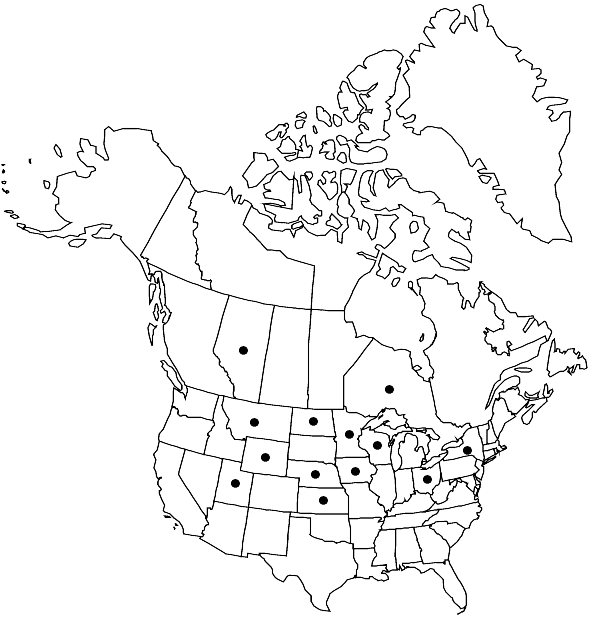Physcomitrium hookeri
Icon. Musc., 30. 1844,.
Plants light green, sometimes brownish. Stems 1–3 mm. Leaves ovate, ovate-lanceolate, to oblong-ovate, flat or concave, sometimes cucullate, distal leaves 2–2.5(–3) mm; margins entire, occasionally uneven from slightly bulging cells distally; costa percurrent to subpercurrent. Specialized asexual reproduction absent. Seta (1–)2–4(–6) mm. Capsule emergent to exserted, 0.8–1.5 mm, ovoid to obovate when young, becoming pyriform or campanulate with age; neck short, usually distinct; exothecial cells irregular isodiametric, oblong, or hexagonal; suboral cells consisting of 3–7(–12) rows of short-rectangular cells; annulus revoluble, composed of large, inflated, mostly deciduous cells. Spores 20–34 µm, papillose.
Phenology: Capsules mature spring.
Habitat: Wet soil in disturbed places
Elevation: moderate to high elevations
Distribution

Alta., Ont., Iowa, Kans., Minn., Mont., Nebr., N.Y., N.Dak., Ohio, Utah, Wis., Wyo.
Discussion
Physcomitrium hookeri lacks the toothed leaves and small annular cells that characterize other members of the genus. Although its distal leaf margins are often uneven from slightly bulging cells, they are never clearly toothed, and its revoluble annulus is composed of large, inflated cells.
Selected References
None.